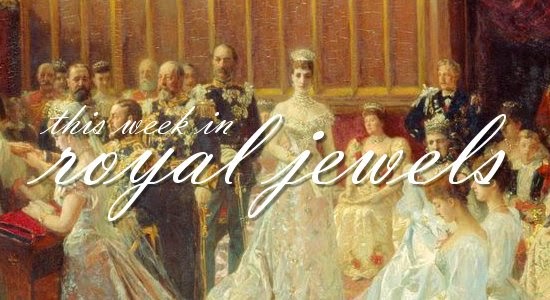
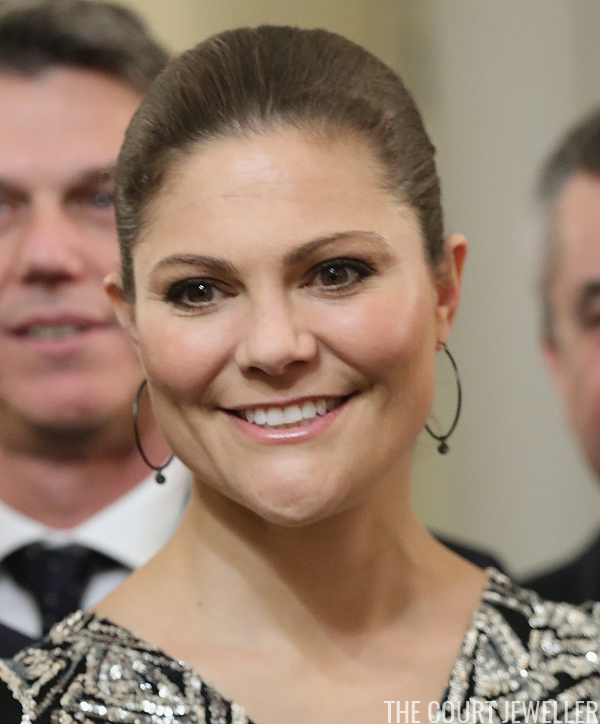 |
| Photo: Vittorio Zunino Celotto/Getty Images |
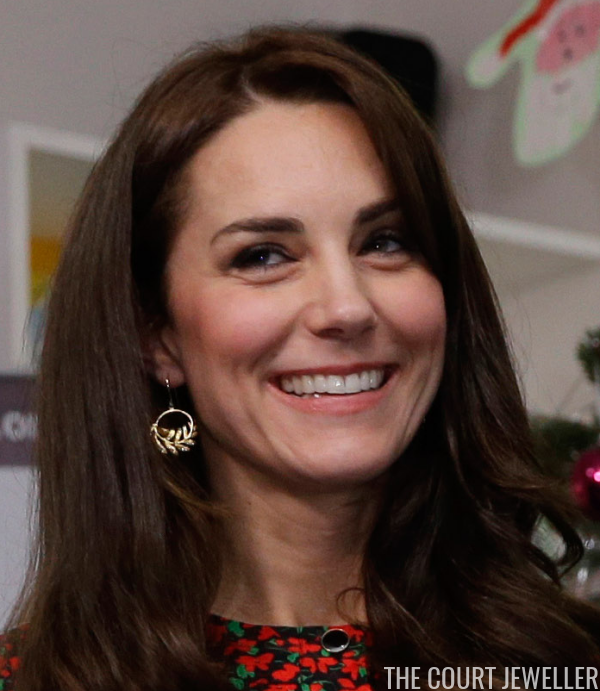 |
| Photo: ALASTAIR GRANT/AFP/Getty Images |
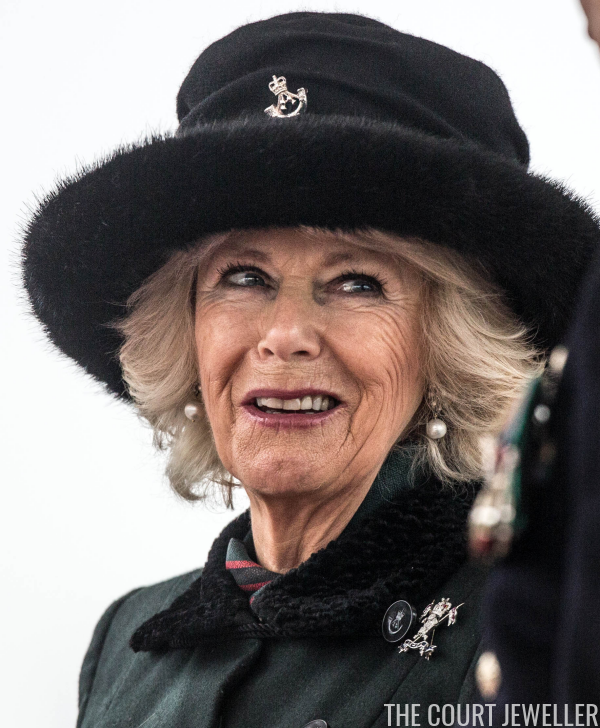 |
| Photo: Richard Pohle – Pool / Getty Images |
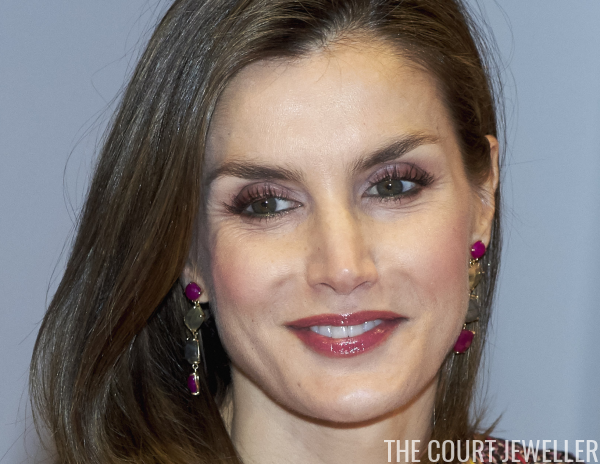 |
| Photo: Carlos Alvarez/Getty Images |
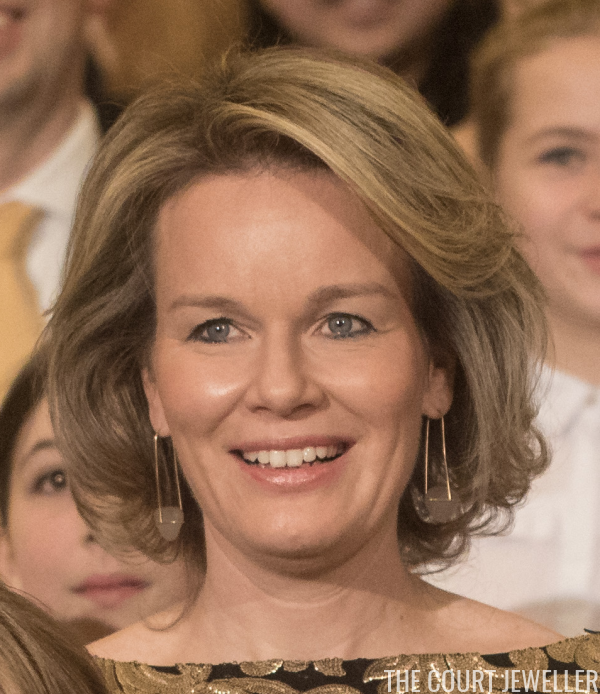 |
| Photo: Olivier Matthys/Getty Images |
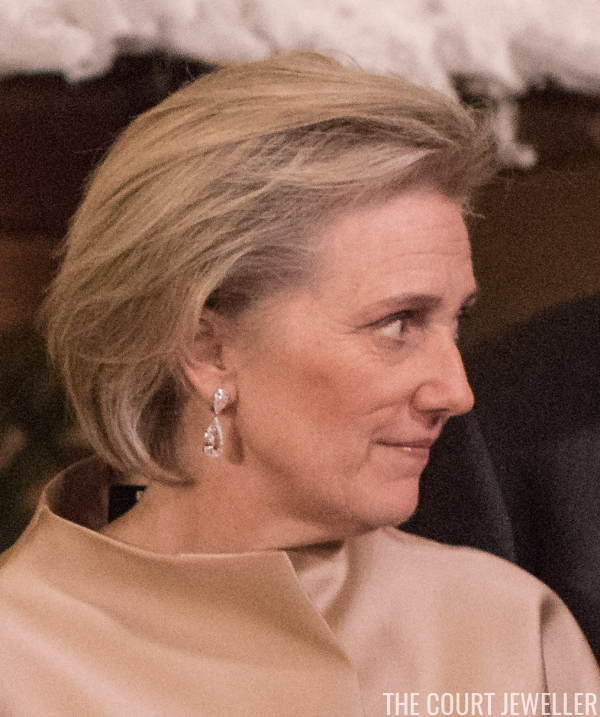 |
| Photo: Olivier Matthys/Getty Images |
Sparkling Royal Jewels From Around the World

 |
| Photo: Vittorio Zunino Celotto/Getty Images |
 |
| Photo: ALASTAIR GRANT/AFP/Getty Images |
 |
| Photo: Richard Pohle – Pool / Getty Images |
 |
| Photo: Carlos Alvarez/Getty Images |
 |
| Photo: Olivier Matthys/Getty Images |
 |
| Photo: Olivier Matthys/Getty Images |
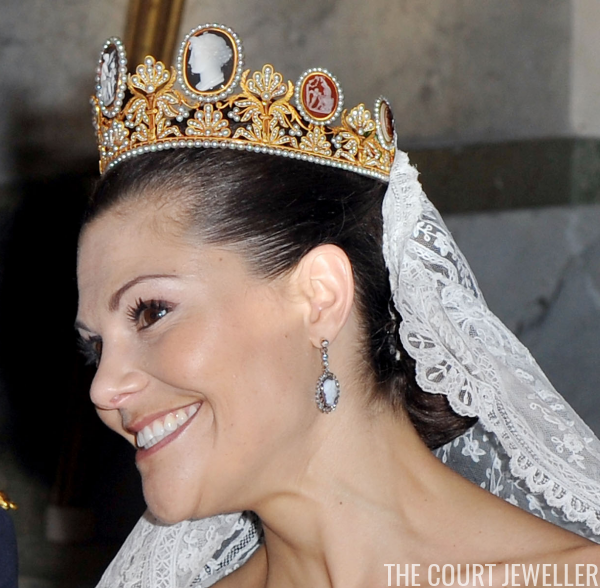 |
| Crown Princess Victoria wears the cameos on her wedding day (Photo: Pascal Le Segretain/Getty Images) |
The parure of cameo jewelry that now belongs to the Swedish royal family is one of the most unique and interesting sets worn by royals today. The cameo suite was made in France during the first decade of the nineteenth century; researchers have argued very convincingly that the parure was owned and worn by Empress Josephine, first wife of Napoleon Bonaparte.
Today, the cameos belong to the Bernadottes of Sweden, who inherited them via the Duke of Leuchtenberg. The tiara has become something of an unofficial bridal diadem for the Swedish royal women. (You can read a more complete timeline of the set’s history here.) The central cameo in the tiara depicts a scene from the myth of Cupid and Psyche, but each cameo is unique. Here’s a series of images that give us a close-up look at the set, which is made of cameos, gold, diamonds, and pearls.
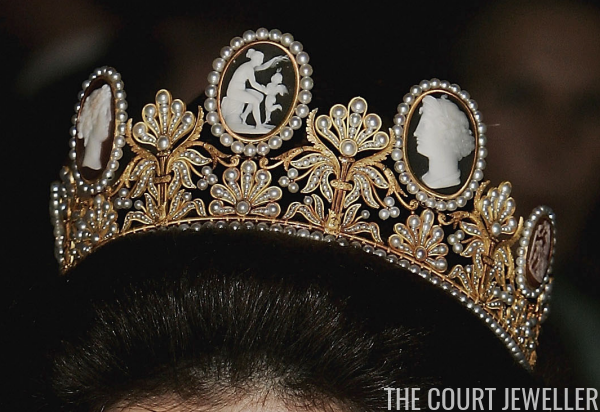 |
| The Cameo Tiara, worn by Queen Silvia of Sweden at the 2005 Nobels [Photo: Pascal Le Segretain/Getty Images] |
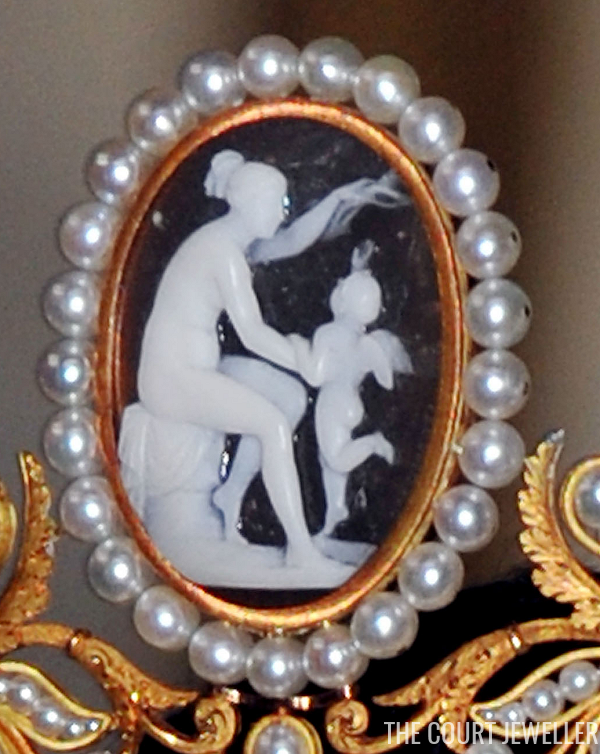 |
| The central cameo of the tiara, which features a scene from the myth of Cupid and Psyche [Photo: Pascal Le Segretain/Getty Images] |
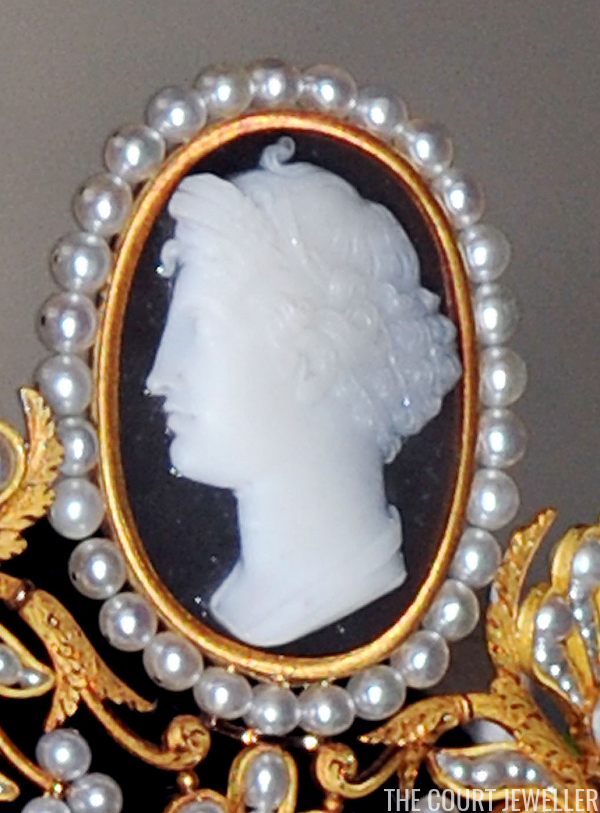 |
| Another cameo from the tiara; this one features a neoclassical portrait [Photo: Pascal Le Segretain/Getty Images] |
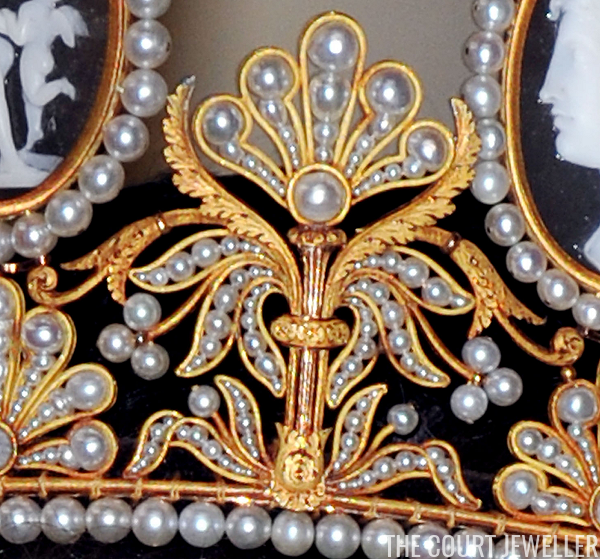 |
| One of the gold and pearl anthemions that are interspersed between the tiara’s cameos. Note the delicate feathering in the gold design, as well as the tiny, graduated seed pearls [Photo: Pascal Le Segretain/Getty Images] |
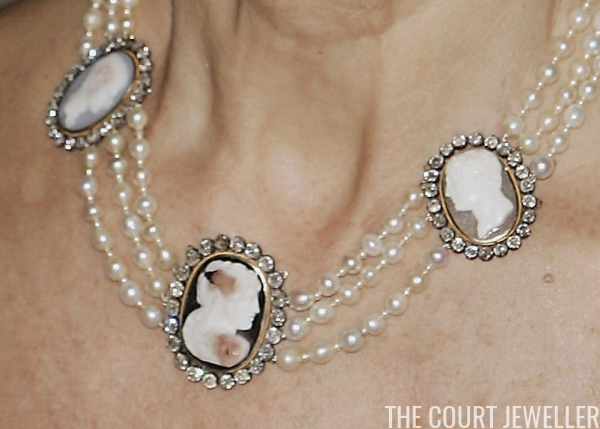 |
| The necklace features three strands of pearls interspersed by portrait cameos framed in diamonds [Photo: Pascal Le Segretain/Getty Images] |
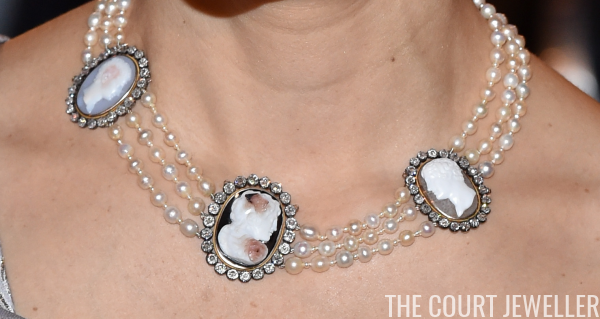 |
| Another view of the necklace and its three portrait cameos [Photo: Pascal Le Segretain/Getty Images] |
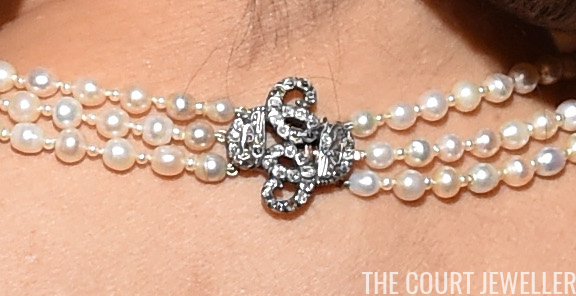 |
| The elaborate diamond clasp of the necklace [Photo: Pascal Le Segretain/Getty Images] |
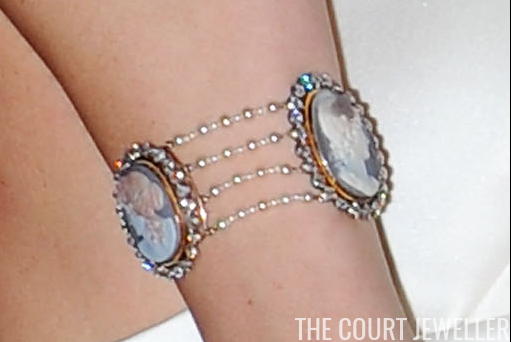 |
| A close view of the bracelet, which features four strands of pearls interspersed with diamond-framed portrait cameos [Photo: Pascal Le Segretain/Getty Images] |
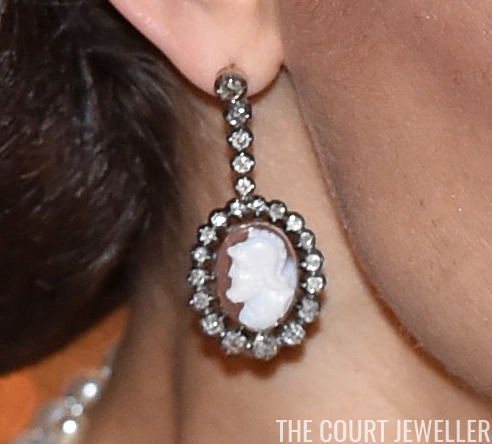 |
| One of the earrings from the parure, which features a diamond-framed cameo suspended from additional diamonds. Note that this earring features a portrait cameo of a soldier [Photo: Pascal Le Segretain/Getty Images] |
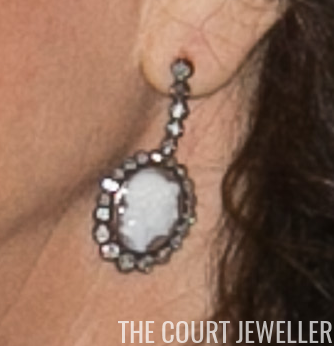 |
| The earrings are not a matched set; here is a look at the other earring, which features a different portrait cameo. (It’s hard to see here, but this one appears to feature a figure crowned with laurel. Perhaps symbolism related to war and peace/victory?) [Photo: Marc Piasecki/Getty Images] |
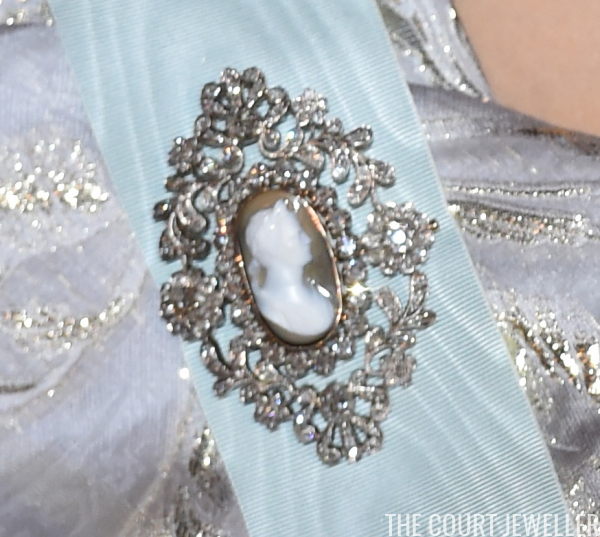 |
| The brooch, possibly a later addition to the set, features a portrait cameo set in an elaborate diamond floral frame [Photo: Pascal Le Segretain/Getty Images] |
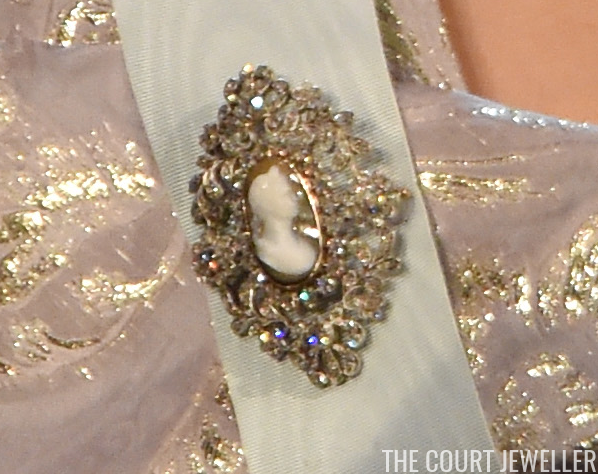 |
| Another angle on the cameo brooch, in slightly different lighting [Photo: Pascal Le Segretain/Getty Images] |
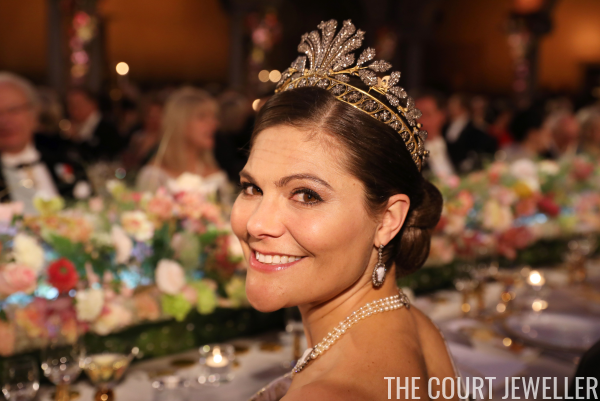 |
| Crown Princess Victoria wears the Napoleonic Cut-Steel Tiara at the 2016 Nobel Banquet [Photo: SOREN ANDERSSON/AFP/Getty Images] |
Some tiaras are made of gold, some of silver, some of platinum. But regardless of the material, they all generally have one thing in common: they’re set with sparkling precious gems. Today’s tiara, however, is a horse of a different color: a tiara made of a different metal — steel, to be precise — that has not a single gem set in its frame. And yet, thanks to its innovative design, it manages to sparkle with the best of them.
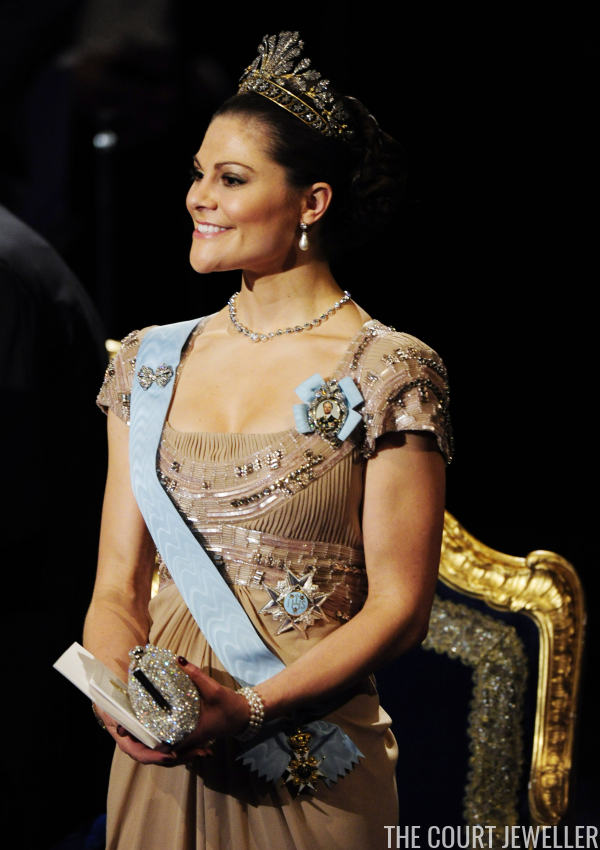 |
| Crown Princess Victoria of Sweden wears the tiara at the 2010 Nobel Prize Ceremony [Photo: Patrik Osterberg/Getty Images] |
The tiara, which belongs to the Swedish royal family, is generally called the “Napoleonic Cut-Steel Tiara.” As the name suggests, this is a tiara with links to the court of Napoleon Bonaparte. But this sparkler didn’t belong to Empress Joséphine or Empress Marie Louise; instead, it’s said to have been made for Joséphine’s daughter, Hortense de Beauharnais.
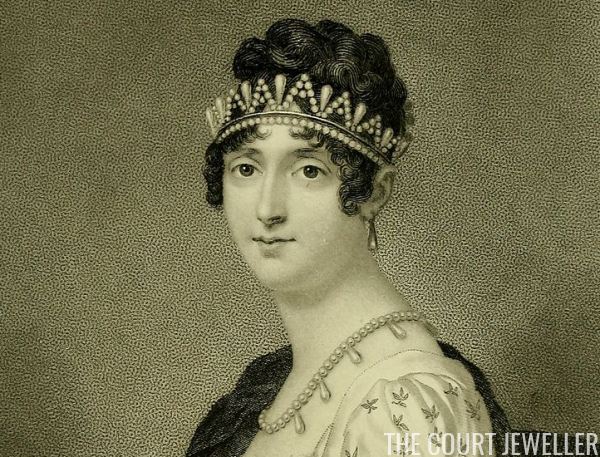 |
| Hortense de Beauharnais, Queen of Holland and original owner of the tiara [Engraving: Wikimedia Commons] |
Hortense was briefly a queen herself — she married her stepfather’s younger brother, Louis Bonaparte, who was king of Holland from 1806 to 1810. (Their son, who became Emperor Napoleon III of France, was married to Empress Eugénie, whose tiaras we’ve seen a time or two.)
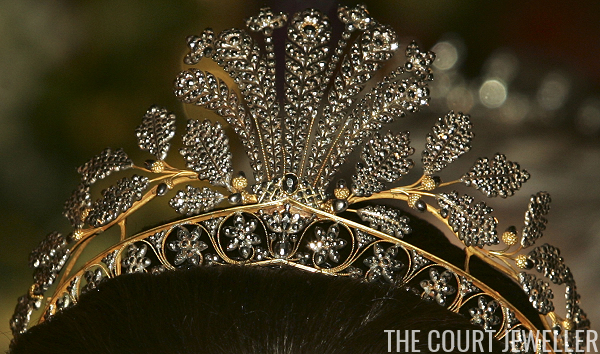 |
| Crown Princess Victoria wears the tiara at the 2004 Nobel Prize Ceremony [Photo: Pascal Le Segretain/Getty Images] |
Hortense de Beauharnais’s steel tiara is something of a marvel. There are no gemstones used anywhere in its construction — no diamonds, no pearls, nada. Instead, it is made of steel that has been strategically cut, polished, and set in gold. But when this piece catches the light, the oak leaf, acorn, floral, and feather elements of the piece glitter almost as if they were inlaid with diamonds. (Even its storage box is unusual!) The piece also has coordinating earrings and a choker necklace.
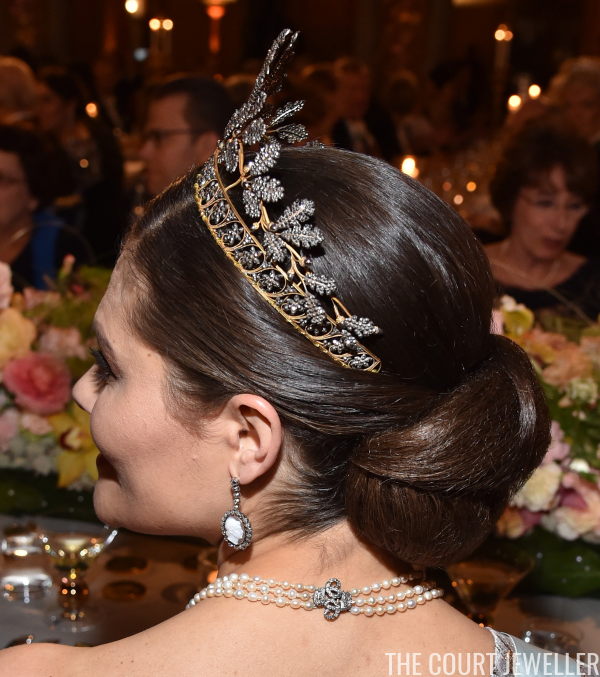 |
| Crown Princess Victoria wears the tiara at the 2016 Nobel Prize Ceremony [Photo: Pascal Le Segretain/Getty Images] |
Hortense had no daughters, and it’s generally believed that she gave her steel jewelry to her niece, Joséphine of Leuchtenberg. (Joséphine had a truly, truly impressive tiara collection — hands up if you’d like a post just on her collection one of these days?) When Joséphine married the future King Oscar I of Sweden in 1823, the steel sparkler apparently traveled with her to her new home in Stockholm.
And then, the tiara apparently disappeared for more than a century. The story goes like this: in 1976, the Swedes had a new queen, Silvia, who was very interested in the family’s historical jewel collection. One day, while poking about in the cabinets at the palace, she found a velvet box; inside was this tiara, forgotten and neglected for years. She had it restored and wore it, along with the earrings and choker, for the first time at a state visit in 1979.
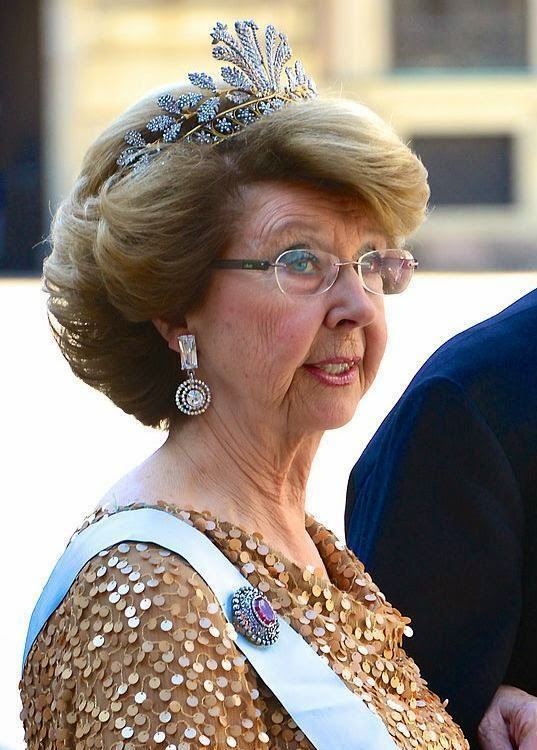 |
| Princess Desiree wears the tiara at Princess Madeleine’s wedding in 2013 [Photo: Wikimedia Commons] |
Since Silvia’s rediscovery of this unique sparkler, it has appeared on many of the royal women, including several of the king’s sisters and the late Princess Lilian. Today, Crown Princess Victoria is the one who wears this tiara most often, though her aunt, Princess Désirée, also wore the tiara at the weddings of both Prince Carl Philip and Princess Madeleine.
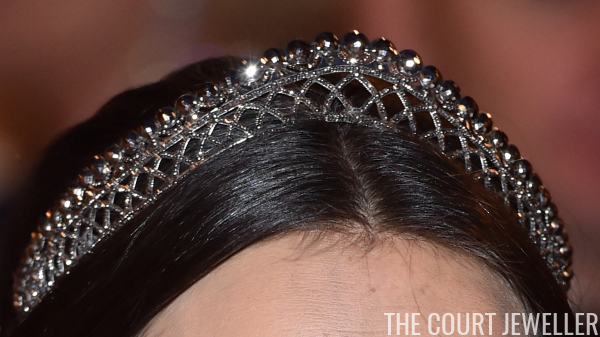 |
| Princess Sofia wears the smaller cut-steel tiara at the 2016 Nobel Banquet [Photo: Pascal Le Segretain/Getty Images] |
Victoria is apparently a big fan of steel tiaras; at the wedding of Hereditary Grand Duke Guillaume of Luxembourg in 2012, Victoria debuted a second, smaller steel tiara. This smaller tiara was apparently also among Queen Hortense’s collection of steel jewels. We got an excellent look at this smaller steel tiara when Princess Sofia wore it at the 2016 Nobels.
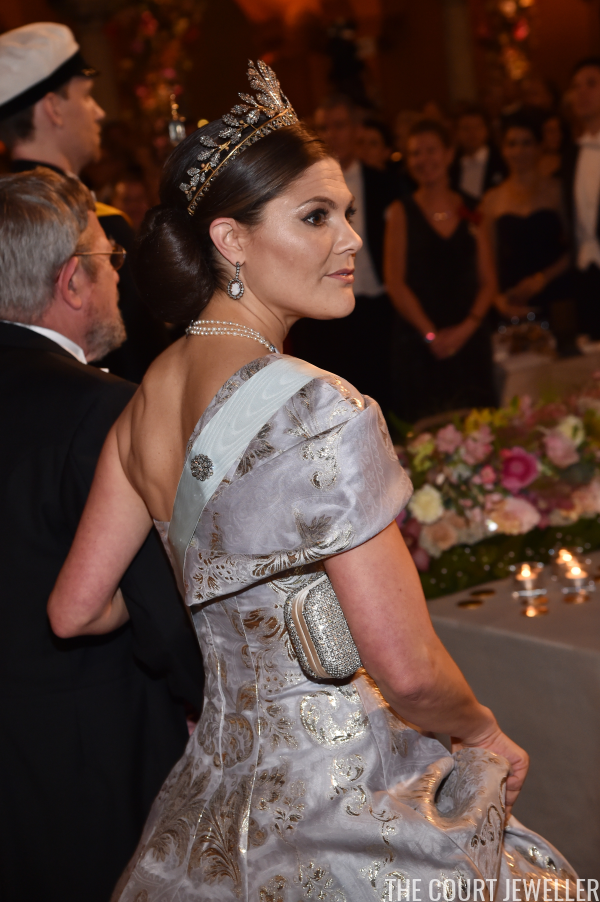 |
| Crown Princess Victoria wears the tiara at the 2016 Nobel Banquet [Photo: Pascal Le Segretain/Getty Images] |
At the 2016 Nobels, Victoria wore the larger Cut-Steel Tiara, pairing it with jewels from another Napoleonic-era set, the Cameo Parure. I just love that the Swedes can “introduce” their hidden heirlooms to the public. Here’s hoping there are even more tiaras languishing in their palaces, just waiting to be discovered and donned by intrepid princesses!